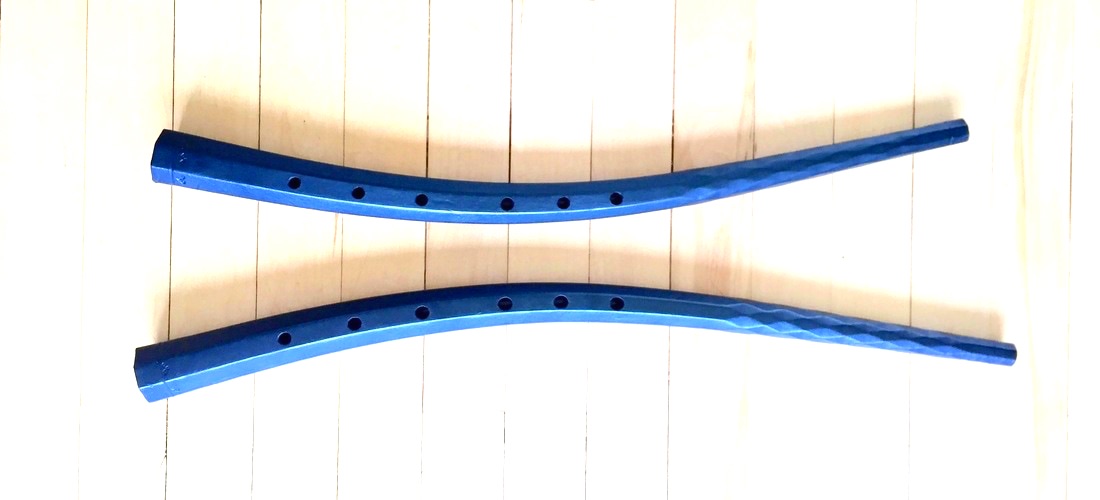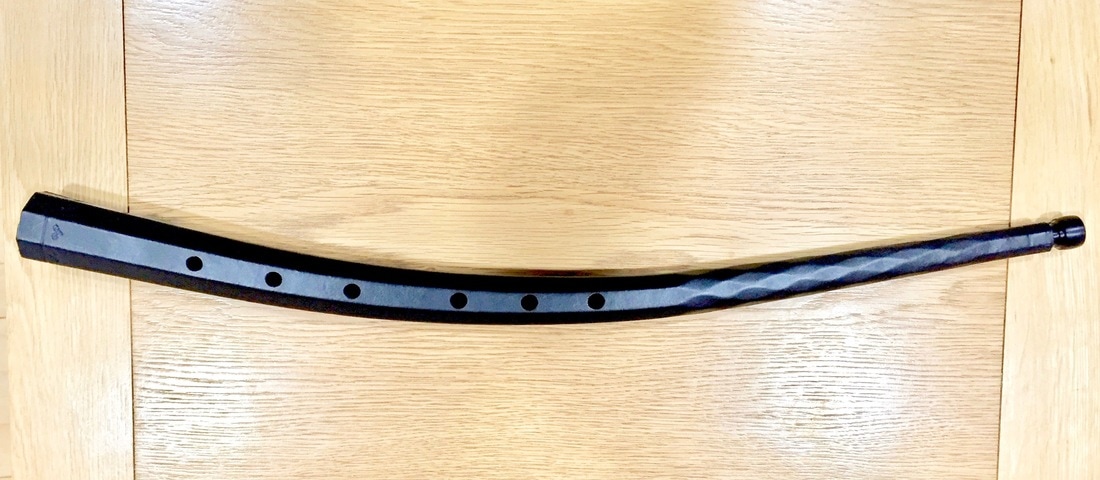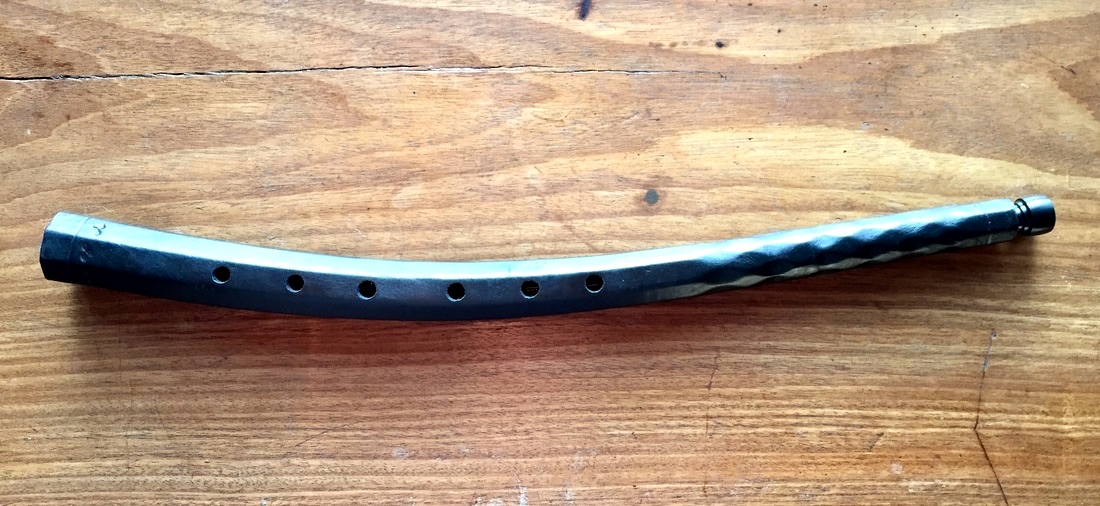A guide to the Cornetts
comparisons and advice
*Modern pitch A=440 or high pitch A=466? * Resin or wood?
* Which mouthpiece should I go for? * What about 3D printed instruments? * What about the mute cornett?
* How long is the delivery time for my new instrument?
These are some of the questions asked by people who are ready to get going on the cornett but who feel a touch lost. I hope that the answers below will be helpful but, in case you need more advice, please feel free to get in touch with Jeremy by email here.
* Which mouthpiece should I go for? * What about 3D printed instruments? * What about the mute cornett?
* How long is the delivery time for my new instrument?
These are some of the questions asked by people who are ready to get going on the cornett but who feel a touch lost. I hope that the answers below will be helpful but, in case you need more advice, please feel free to get in touch with Jeremy by email here.
Which instrument should I choose to get started?
Most people opt to take the resin instrument at A=440. The new G2 model is particularly good, so much so that if I were to play a concert with half the music on a resin instrument and half on my top of the range wooden one I would be surprised if you could tell them apart. The wooden instrument will, at the end of the day, have greater flexibility but you need to be an advanced player truly to take advantage of this. That said, some customers of Christopher Monk Instruments have gone for a wooden cornett, even with no previous playing experience on these instruments, simply because they prefer not to have something made of "plastic". (Actually it's not plastic but even so, yes, resin is a man-made material!)
All our "G2" resin cornetts offer exceptional value for money being reliable and stable with a great sound. Treated with some care (which really means not mistreating them) these instruments will play well for decades.
Also see note on the mute cornett below
All our "G2" resin cornetts offer exceptional value for money being reliable and stable with a great sound. Treated with some care (which really means not mistreating them) these instruments will play well for decades.
Also see note on the mute cornett below
Pitch?
G2 cornetts at A=440 (modern pitch) & 466 in ebony resin
High pitch A=466 is more historically correct or appropriate since the majority of surviving originals sit higher than our adopted modern pitch of A=440. The sound is brighter and the instrument, being shorter, is easier in the hands. However most people these days play at A=440 and, if you prefer to go with the high pitch instrument, you need to be sure that you are going to have people with whom you can play. That means trombone players on sackbutt who are happy to relearn the slide positions or recorder, shawm or dulcian players who have invested in high pitch instruments. And, of course, the availability of keyboards which will play at this pitch. Although the number of groups playing at high pitch is growing the majority of players continue to run with modern pitch for convenience.
Please note that there is no such thing as a cornett at A=415 and you should not get drawn into the notion that you need this to play Bach at low pitch. Any museum original cornett which appears to be at A=415 is likely to be an alto at A=466! To play Bach at low pitch we use a cornett at A=466 and transpose down a tone
High pitch A=466 is more historically correct or appropriate since the majority of surviving originals sit higher than our adopted modern pitch of A=440. The sound is brighter and the instrument, being shorter, is easier in the hands. However most people these days play at A=440 and, if you prefer to go with the high pitch instrument, you need to be sure that you are going to have people with whom you can play. That means trombone players on sackbutt who are happy to relearn the slide positions or recorder, shawm or dulcian players who have invested in high pitch instruments. And, of course, the availability of keyboards which will play at this pitch. Although the number of groups playing at high pitch is growing the majority of players continue to run with modern pitch for convenience.
Please note that there is no such thing as a cornett at A=415 and you should not get drawn into the notion that you need this to play Bach at low pitch. Any museum original cornett which appears to be at A=415 is likely to be an alto at A=466! To play Bach at low pitch we use a cornett at A=466 and transpose down a tone
G2 cornett at A=494 in ebony resin
If it is the treble cornett that you wish to play and if you want to find an instrument with real brightness and focus, or you have very small hands, this could be the one for you. Sitting one tone above modern pitch you will find it surprisingly easy to play in a group by transposing down one step.
If it is the treble cornett that you wish to play and if you want to find an instrument with real brightness and focus, or you have very small hands, this could be the one for you. Sitting one tone above modern pitch you will find it surprisingly easy to play in a group by transposing down one step.
G2 cornettino at A=440 (modern pitch) in ebony resin
This is in fact the descant of the family and not really an instrument for children! That said quite a number of these resin instruments has been sold to parents for use by their children and they are very successful in this regard. The finger stretch of the treble instrument, even the high pitch version, can be a real challenge for some people's hands and children will certainly be unable to tackle it. However the cornettino is a 'serious' grown-ups' instrument with its own specialist repertoire of intimidatingly high music. The new G2 resin instrument represents a giant leap ahead from its predecessor and offers the player a good all-round instrument, with full-bodied sound and stable tuning, for a very reasonable price.
This is in fact the descant of the family and not really an instrument for children! That said quite a number of these resin instruments has been sold to parents for use by their children and they are very successful in this regard. The finger stretch of the treble instrument, even the high pitch version, can be a real challenge for some people's hands and children will certainly be unable to tackle it. However the cornettino is a 'serious' grown-ups' instrument with its own specialist repertoire of intimidatingly high music. The new G2 resin instrument represents a giant leap ahead from its predecessor and offers the player a good all-round instrument, with full-bodied sound and stable tuning, for a very reasonable price.
Delivery time?
We aim always to have the resin instruments in stock but, in the event that we have none available, there should be an up to date delivery time on the cornett page of this website. Please bear this in mind and check first if you are going to click one of the 'buy now' buttons.
The wooden instruments are normally made to order but, again, you will be able to see whether a model is in stock by visiting the cornett page.
The wooden instruments are normally made to order but, again, you will be able to see whether a model is in stock by visiting the cornett page.
Wooden cornetts
Your choice of wood is always going to be as personal as it is critical. I personally have always opted for boxwood, favouring its brightness of sound and speed of response. Other players prefer a softer material such as plum or apple wood. Some of the loveliest cornetts that we have ever produced at the Christopher Monk workshops were from pear wood which is really quite soft but which can produce the sweetest sound. Sycamore and maple can make a fine cornett as can hornbeam - that very hard, plain wood spurned by furniture makers because it looks so uninteresting. Wrap it in leather, however, to make a cornett and it really makes no difference how plain it looks!
To discuss your needs / thoughts / requirements please click here.
Jeremy West at the Christopher Monk workshops 2017
To discuss your needs / thoughts / requirements please click here.
Jeremy West at the Christopher Monk workshops 2017
|
G2 resin treble cornett at A=466 G2 resin treble cornett at A=440 the 440 instrument is a one-off "leftie" (left-handed instrument) made 2017 for Gebhard David G2 resin cornetto at A=440 G2 resin cornettino at A=440 |


